How Seaweed is Helping Farming Face a New Future

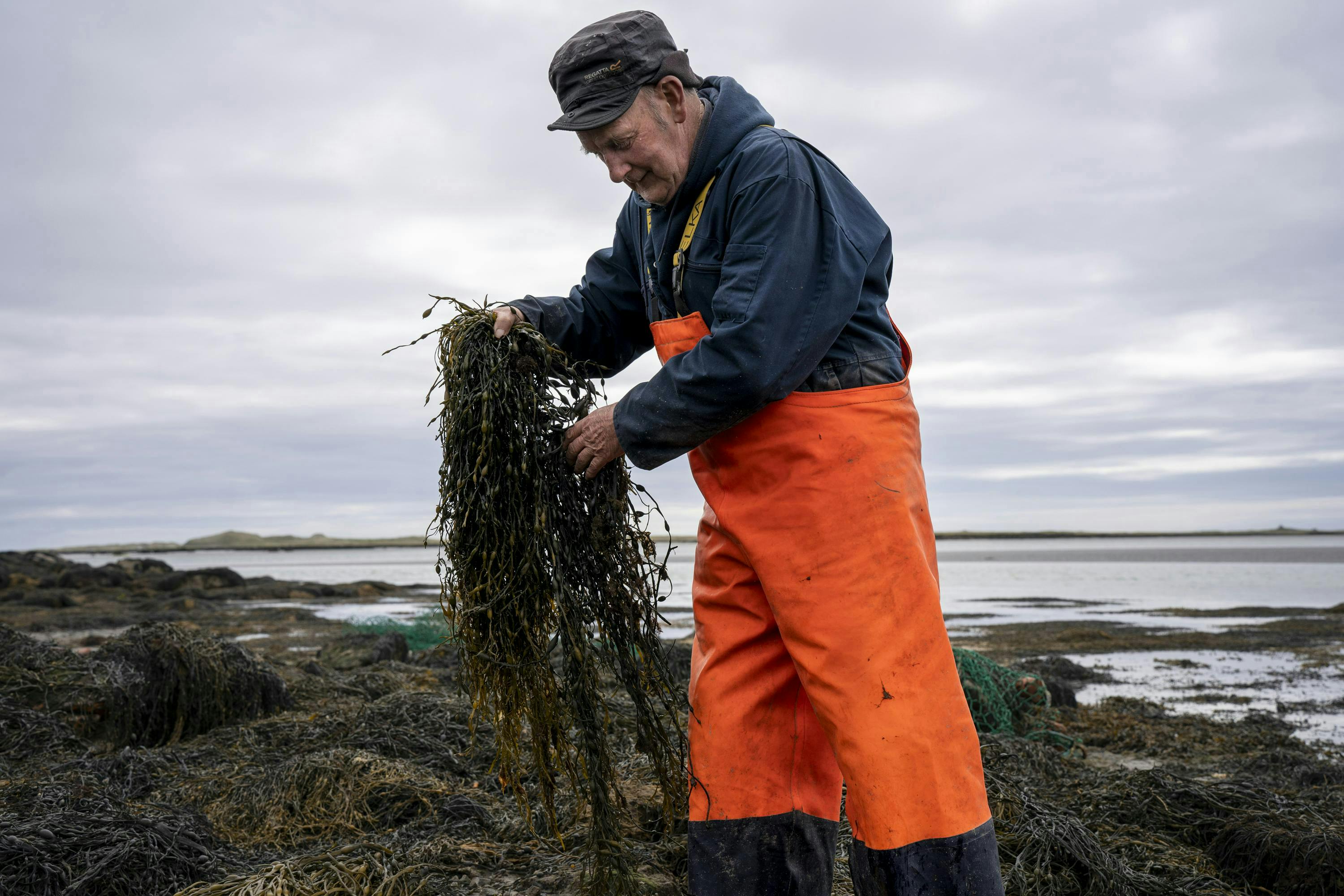
It’s low tide around North Uist, a remote island off the West Coast of Scotland. Dark tendrils of seaweed lie glistening on the rocky shore, and a lone figure in orange waders moves methodically along the bay, slicing the seaweed with a sickle-shaped blade known in Gaelic as a ‘corran’. Angus MacDoughall has been harvesting seaweed on and off since he was 17 when his fishing work dried up. Now at 73, he still harvests three to four days each month.
“It gets you out of the house, gets you moving,” he explains, “I’m not someone who could ever sit at home.”
His silver blade gleams as it flashes along the rocks, slicing the fronds of seaweed. “It’s getting a bit sore on my back now, but I suppose as you get older the bones start to creak.” He then adds with a wry smile, “you make a good bit of money through it as well. That’s the important bit.”
MacDoughall is harvesting Ascophyllum nodosum, also known as rockweed in many areas of the world. It’s been used for centuries by local people as a way to enrich the soil and support their crops.
Now, that knowledge has evolved into a more sustainable harvesting operation, extracting the biologically active compounds of this seaweed and turning it into an agricultural biotechnology with three major benefits: supporting crop growth in difficult conditions, restoring soil health, and removing carbon from the atmosphere, a key action for tackling climate change.
Angus MacDoughall
Seaweed farmer

Seaweeds are more effective at capturing carbon than plants, partly due to their high photosynthesis rates. As a result, seaweed has been identified as a potential carbon sink that could help mitigate climate change and its potential has drawn attention from researchers keen to explore how this could be used in a multitude of industries, from agriculture to feed and food supplements. One such example is Acadian Plant Health, a biostimulant company which formulates solutions for agriculture.
Acadian Plant Health says it is careful never to remove more than 25% of the seaweed from any given area each year. The way Acadian harvest the seaweed ensures it grows back every year so it recaptures carbon as it regrows, they explain. In the same way you prune a hedge, they cut back the plant so the base remains and can regrow.
It’s the job of Casey McIntyre, resource manager for Acadian Plant Health in Scotland, to coordinate their team of independent harvesters and make sure this target is maintained. Similar to pruning a tree, cutting the seaweed can encourage it to grow back to its pre-harvest state quicker, increasing the CO2 uptake.
While some harvest with the boat-and-rake method introduced by Acadian, others prefer the traditional approach of their forefathers, hand-cutting the seaweed at low tide with a sickle-shaped blade
Beyond sequestering CO2, Ascophyllum, sometimes called Asco, has many properties that make it worth harvesting. “It’s a really resilient plant,” explains McIntyre. Unlike kelp, which grows in deeper water and remains fully submerged, Asco grows in the tidal zone, spending half the day in freezing cold water and the other half drying out on rocks.
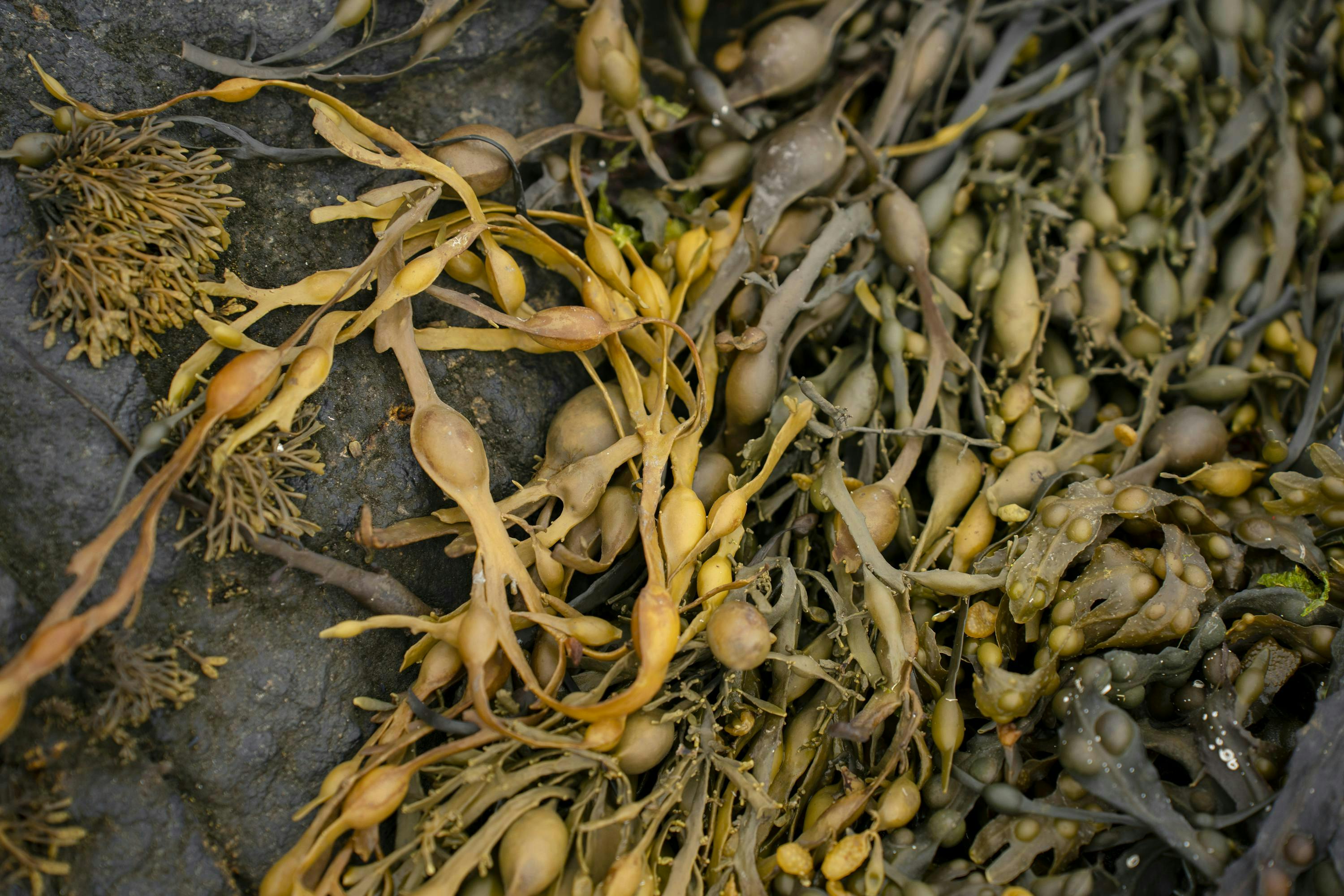
It has adapted to tolerate harsh conditions of freeze and thaw, dehydrating and rehydrating with the tides. By extracting the seaweed’s bioactive compounds in their processing facility and turning them into agricultural solutions, Acadian Plant Health says it is able to transfer Asco’s resilience to crops, when the biostimulants are applied directly to them.
James Maude, senior vice president of Acadian Plant Health, likens the process to humans having a vaccination – it stimulates our body’s natural defences to become more resilient. Similarly, the seaweed extract stimulates the crops to switch on genes which boost their ability to tolerate the environment stressors and extreme conditions brought on by climate change.
Acadian’s biostimulants help plants cope with these environmental challenges. The extract, they say, strengthens the plants natural defences and improves its resilience to stressful growing conditions by liberating numerous bioactive compounds such as mannitol, polysaccharides and betaines.
Food and Agriculture Organization of the UN (FAO)
“When applied to soil, we’ve seen our biostimulant cause changes in gene expression that affect nutrient uptake, which indicates that they grow better under limited nutrition,” says Maude. “When treated with our extract, they exhibit increased nitrogen use efficiency, enhanced growth and productivity, even with reduced fertiliser application.
Enhancing nutrient utilisation in plants can help play a role in mitigating greenhouse gas emissions. Given that nitrous oxide (N2O) stands out as one of the most potent greenhouse gases globally, boasting a global warming potential approximately 300 times greater than that of CO2, agriculture emerges as a major contributor to this gas. In fact, roughly 80% of total agricultural emissions originate from N2O alone.
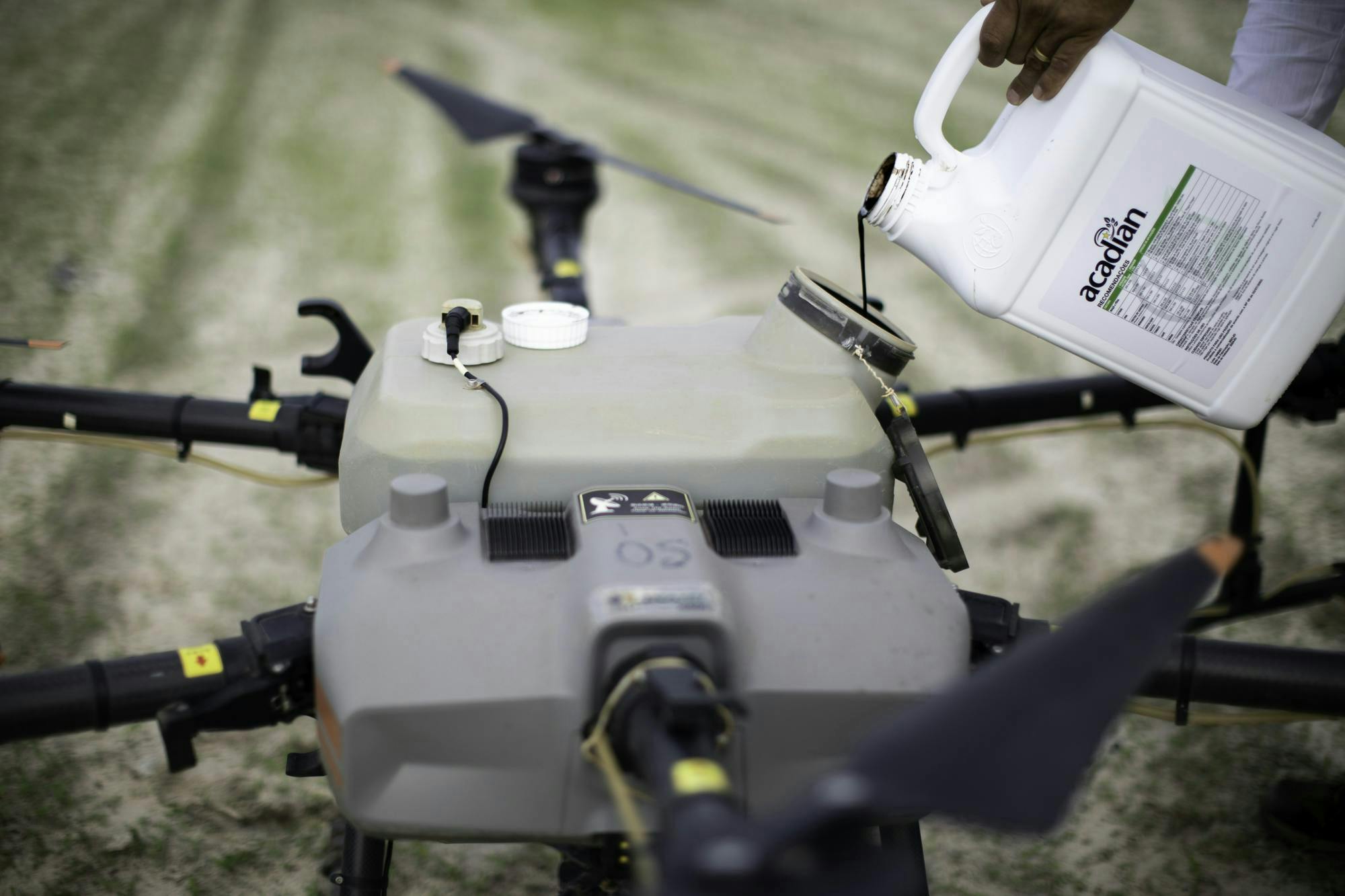
Acadian Plant Health’s seaweed extract, Ascophyllum nodosum, is not a fertiliser, because it’s not a direct food for the plant. Instead, it stimulates an increase in the root biomass of a plant while also encouraging more root exudates, sugars which leave the roots and attract symbiotic microbes such as fungi, yeast, and bacteria. The microbes feed on these sugars and in return break down organic matter in the soil to feed the plant and capture carbon in addition.
“Nature has its own way of feeding the plant,” explains Maude. “Plant health all comes from the roots.” A greater root biomass also enables the plant to draw down more carbon from the atmosphere and store it in the soil – two benefits for the price of one.
“Climate change is making it harder for us to grow crops in places we always have,” he says, “and climate change is related to greenhouse gases. We know soil can absorb CO2 and that soil needs to be healthy to grow crops. It all starts and ends with soil.”
Soil is one of the world’s largest carbon stores and holds more carbon than is contained in plant biomass worldwide, but it’s one we are in danger of losing.
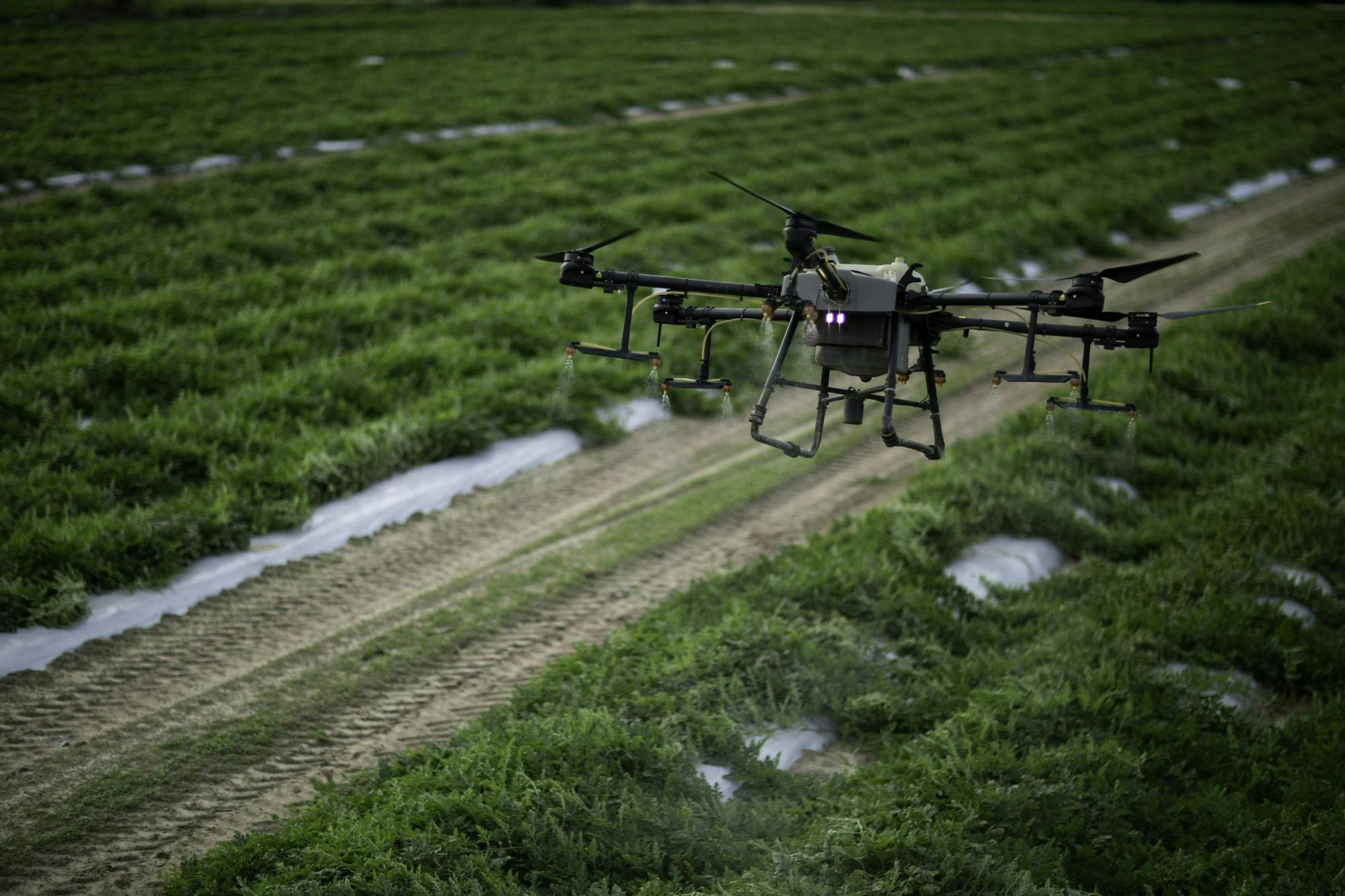
In 2022, the United Nations classified one third of the world’s soil as degraded and predicted that up to 90% could be lost by 2050, greatly threatening our ability to feed the planet’s growing population. Globally, 95% of our food is produced with soil. Soil is also home to 59% of all species on Earth, not just plants but microbes, fungi and animals too. Although soil erosion can and does occur naturally, it’s greatly increased by human activity such as intensive farming practices, deforestation, overgrazing, urbanisation and forest fires.
“Soil is a living ecosystem, only when it’s alive does it remain viable for agriculture,” says Maude, explaining the different ways that soil can be killed. If it becomes anaerobic – lacking in oxygen – through compaction by heavy equipment, or if the soil becomes too salty, the microbes will suffer.
In soils with low microbial activity, soil loses its ability to stick together and hold water, turning to dust which is either blown or washed away thus increasing its erosion.
“Many farmers are struggling with depleted soils through lack of nutrients or moisture, and this makes the crops stressed,” says Maude. “Our technology gives crops the ability to survive in today’s poor soil, and then by increasing root biomass and soil microbes we also help to regenerate that soil.”
Richard Muller
Chief Operating Officer, Agricola Famosa
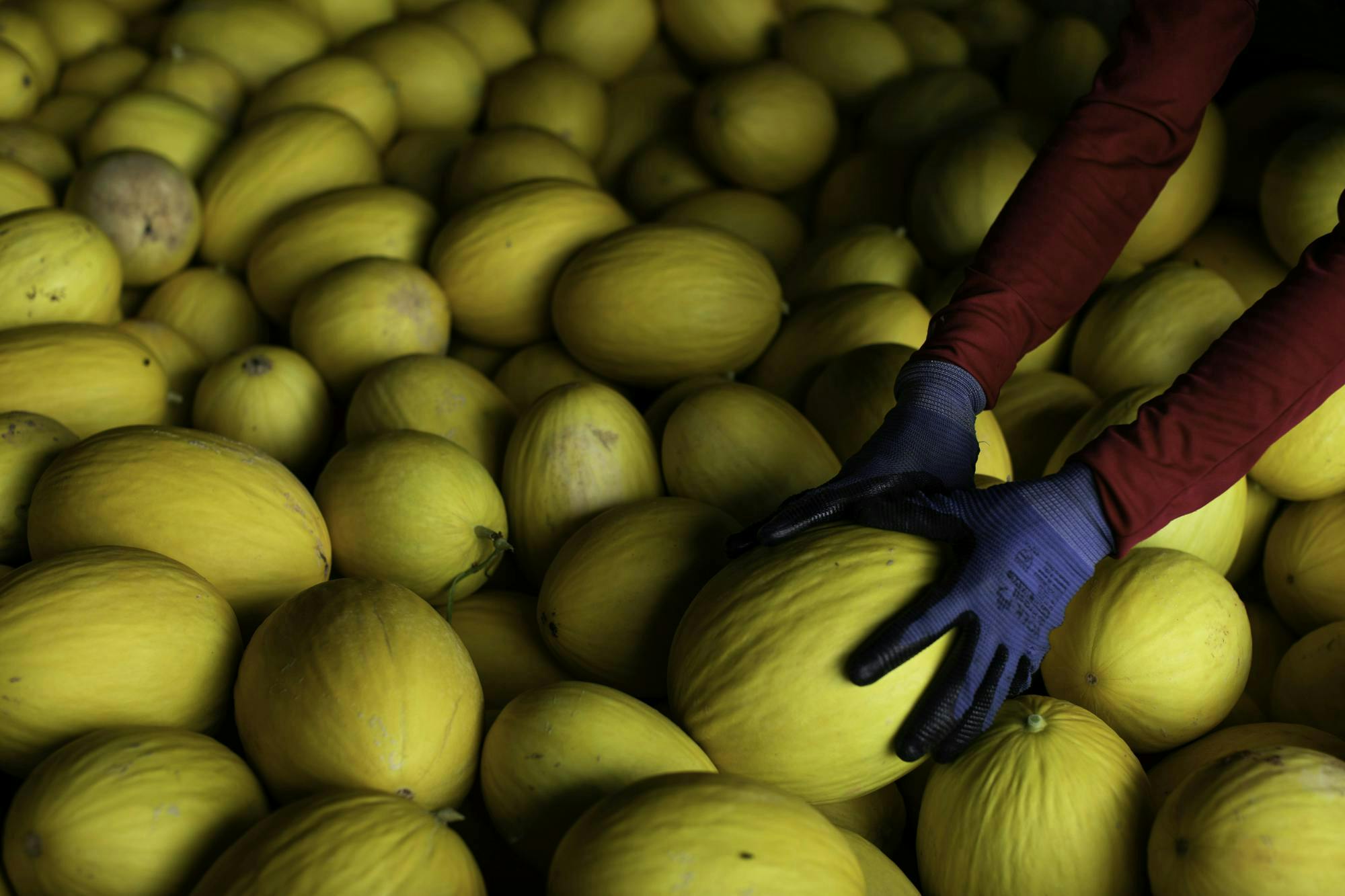
“Regenerative agriculture is the agriculture of the future for us,” says Richard Muller, chief operating officer of Agricola Famosa, a commercial farm near Mossoro, a city in northern Brazil. “Zero use of pesticides means you have soil that will, hopefully, give you higher productivity.”
Muller adds that in the past conventional agriculture gave little importance to the soil. Over the years farmers were applying more and more pesticides and fertilisers, but failing to see results. Something had to change. They started to explore organic farming and biodynamics, replacing their chemicals with biological pest controls and organic supplements such as seaweed.
“We had a lot of problems with plant damage in the fields, a lot of mortality. The soil was very worn out,” says Muller. “The [Ascophyllum] technology from Acadian brought very important results for us. The plants survived even in bad soil conditions.”
He also noticed an improvement in their ability to tolerate harsh conditions, particularly during the hottest months of the year when field temperatures can reach 38-40C (100-104F). Whereas normally their crops would wilt in these conditions, “the biostimulant helps the plant to remain turgid and keep growing,” he says. It had a positive impact on their soil too, multiplying microorganisms that both benefit the plants and help to control pests and diseases, he says.
“This path we are on was not necessarily driven by an environmentalist ideology but by pursuit of results,” Muller says.
Maude warns that the transition to regenerative agriculture, which describes farming practices that primarily are utilised with the aim to minimise the future impact of climate change by rebuilding soil’s organic matter, might not happen overnight. “Return on investment on soil health is not annual, it takes years. But many farmers harvest yearly,” says Maude.
Maude is optimistic that change is coming, and that biostimulants are going to play a big part in the solution while ensuring that the process remains as sustainable as possible, by sticking to the rule of taking no more than 25% each year. “It’s like an unpolished diamond,” he says enthusiastically, “the market hasn’t been ready but it’s ready now... the world wants solutions and our technology sits in that space… That’s really exciting.”
Acadian biostimulants are a crucial and innovative tool in agriculture with active ingredients that trigger the plant’s physiological processes to help increase stress tolerance against climatic changes and improve soil health. This article is part of the Blue Horizons series, presented by the World Ocean Council. The World Ocean Council is the international business alliance for corporate ocean responsibility.